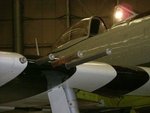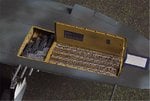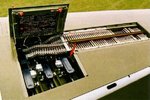trackend
Chief Master Sergeant
I cant believe they would interfere with an aircraft's armament for aesthetic reasons Dave, as they are called blast tubes I would have thought they are for blast IE hot gases. You have a point Dave regarding maintaining barrel alignment the M2's barrel being reciprocating would only be as accurate as the guides that the barrel moves on so supporting the barrel could be an answer but would not this increase the chances of a stoppage caused by the barrel seizing in the blast tube guides due to heat as to have any effect in maintaining the barrel alignment the tolerances would have to be fine. I believe the stagger is to off set the belt feeders within the wing.










